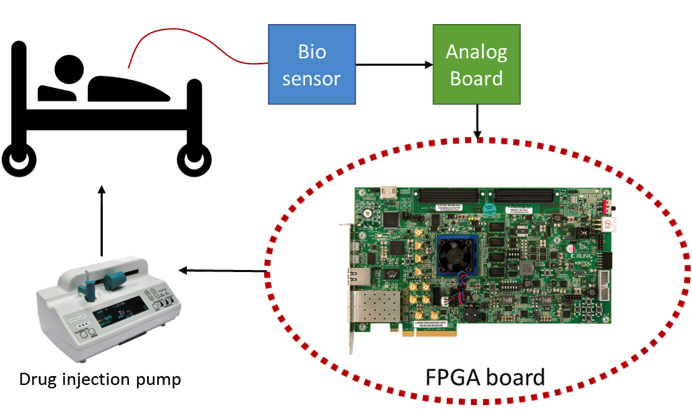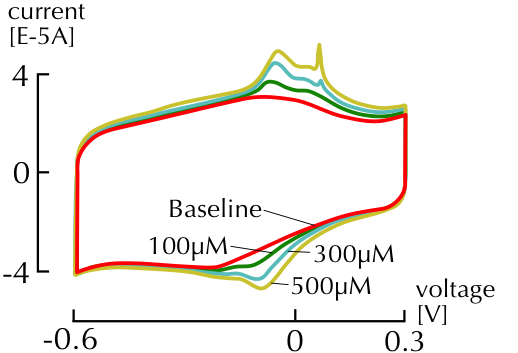**** Master Project or Semester Project ****
Contact: Dr. Federico Angiolini, Senior Scientist, EPFL-IC-IINFCOM-LSI
Project Description:
Anesthesia is an essential procedure in modern medicine, with a major role to play during both surgical interventions and intensive care treatments. Since anesthesia is a name that encompasses multiple effects (sleep induction, pain reduction, muscle relaxation), it is delivered with a cocktail of two or three drugs, among which common ones are Propofol, Midazolam, and Fentanyl.
The precise dosage of this drug cocktail is of the essence. Underdosage can result in sudden awakenings during surgery, while overdosage may even be fatal. For this reason, hospitals enlist dedicated specialists, called anesthesiologists, responsible for accurately establishing and maintaining an appropriate level of anesthesia in patients.
Over the decades, anesthesiologists have improved their procedures to the point that both fatalities and awakenings are now a very rare occurrence. Yet, anesthesia induction remains a delicate process. According to some studies, anesthetics might nonetheless have long-term neurotoxic effects, potentially causing cognitive impairments in patients that undergo repeated treatments. Therefore, on the grounds of caution, it would be best to deliver just the minimum necessary amount of drugs that will suffice to induce anesthesia.
Unfortunately, it is difficult to precisely calibrate the amount of anesthetics to be injected. This is because of numerous uncertainties. Patient physiology and metabolism can vary tremendously; this is due in part to common, easy-to-measure variables (age, gender, weight) but also due to numerous other parameters, not last of which the fact that patients undergoing anesthesia are most often experiencing some type of anomalous situation, e.g. bleeding, shock, impaired organ functionality, etc.. Therefore, despite the development of mathematical models over the years, there is a major degree of uncertainty as to how the drugs will be metabolized by the patient.

Figure 1 – Proposed anesthesia delivery control setup
In the project Continuous Monitoring of Anesthetics (CoMofA), involving two laboratories of EPFL and the University Hospital of Lausanne (CHUV), we set out to improve the situation as follows:
- First, we are designing biosensors that can measure in real time the concentration of the anesthesia cocktail directly in the blood.
- Next, we plan on implementing an electronic system, FPGA-based, to read out the raw sensor data and apply the proper calibrations. The output will be a filtered measurement expressing the live drug concentration.
- With a sophisticated set of algorithms, this data can be used to “customize” an a-priori patient model, yielding a more accurate estimation of how the drug is being metabolized by the specific patient in question.
- Finally, this estimation can be used, if desired, to drive a drug-injection pump. Presently, these pumps operate under the direct control of the anesthesiologist, and rely on an open-loop estimation algorithm to (inaccurately) achieve the desired effect. With feedback from the biosensors, a semi-closed-loop could be achieved, enabling a more precise control of the drug delivery and minimizing the injection rates.

Figure 2 – Example signal from a voltammetry scan; the height of the current peaks correlates to the concentration of a molecule under measurement
Project Tasks:
In this sub-project, a student supervised by the LSI laboratory will work on an FPGA platform implementing primarily function 2 from the list above and, depending on the timelines of other project partners, possibly also portions of functions 3 and 4. In detail, the objectives will be:
- To develop an FPGA board capable of reading in analog current signals from a separate board, and converting them to digital signals.
- To appropriately condition this signal and process it to detect metrics of interest. In particular, it will be useful to detect current peaks, which correlate to the concentration of the drug of interest.
- To provide appropriate calibration functions. Depending on input data from project partners, routines will be needed to compensate for effects such as: inter-sensor variability; sensor aging or fouling (degradation of the sensitivity due to progressive accumulation of layers of interfering molecules on its surface); temperature; pH; etc.
The project will be concluded by the delivery of a short written report and a presentation.
Eligibility Requirements:
The eligibility requirements for this project are:
- VLSI design background
- Familiarity with HDL languages (VHDL or Verilog)
- Basic knowledge of FPGA architectures and flows
- Analog design expertise welcome